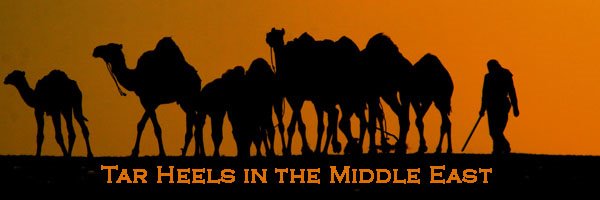Before I write about my latest epiphany, I thought I would introduce myself (or rather cuz Matt said we should :)). Born and raised in Pakistan, I studied at Carolina and graduated this May. Now I'm traveling through Egypt for the summer with 11 journalism students from Arizona, Nebraska, Utah and Maryland, taking pictures, writing stories, talking to people and pretty much having a good time. We 're all here on the Fulbright program, doing different stories on the Middle East and learning how to be journalists in the Middle East. Even though I am a broadcast journalism major, I opted to work in photojournalism since I enjoy that a lot more. Its hard being part of a group of journalists that all pretty much have preconceived stereotypes of the Middle East, dont drink tap water, complain about the heat and are absolutely horrified about the intense amount of smoking in the region.
I am guilty of enforcing this stereotypes as well. Which leads me to my next blog.
Journalists think that they know everything.
As a group of people that work around the world, most journalists tend to think that since they write about something, they know more about it than others, aren't sensitive to other people's opinions and feelings, and don't realize that their actions might be offensive and judgemental towards others.
I am guilty of this stereotype as well.
Ola taught me differently.
I met Ola yesterday at the Cairo tower, a high rise in Cairo from where you can pretty much see most of the city, even the pyramids in Giza. The midday sun is one of my seven plagues. It never leaves you alone, takes the longest time to go away and is the most awful lighting for any kind of photography. Needless to say, pollution and the light made the majestic pyramids look like tiny specks of brown mud. So I sauntered around the tower, cursing the sun and complaining about the pollution, when I was pulled aside by a little girl who was probably around 6 years old. She took me to her parents and her two other sisters and then proceeded to tell me how beautiful I was. We then started to fight about who was the prettier one, me or her. "anti gamila, la anti gamila"...I met her father and her mother, who were from Cairo. I started snapping photos of the little girls, chatting with their father about Pakistan, America and Egypt. Out of the corner of my eye I saw their mother walk to the side of the tower staring at the suffocating city below.
She is a Niqaabi, meaning that she wore the black Muslim dress that covered everything but her eyes. I didn't think she would let me take photos of her since most women wearing the Niqaab (and we had been warned about taking photos of them at a journalism briefing before) are not very susceptible to being photographed. Nevertheless, I tentatively walked over to her, started talking to her and asked if I could take her photo. She said ok.
Her name was Ola.
I took a multitude of photos of her, most of which were washed out because of my archenemy. I started feeling uncomfortable as some of the students on my trip, when they saw me taking photos of Ola, started snapping away as well. Sensitive to the fact that she might be uncomfortable, I thanked her, told her her eyes were beautiful (basically because I couldn't see anything else) and walked away.
She spoke to me while I photoshoped. I sat and stared at her photo for a good 15 minutes before I actually started to work on it. Here I was, snapping photos of a woman who was all covered, was not an anomaly from where I was from, but I took atleast twenty pictures of her because I knew that the stereotypical image of a covered woman is what sells. People exclaim in shock when they realize that a photog was able to get close to a niqaabi and take her picture. What we don't realize is that these shrouds in black are actually women. They are real. There is someone behind all that black and there are eyes that peek through the tiny slights of black. Ola taught me to be humble and to realize that the best picture may not necessarily be the one that shows the most humanity. So this is my salute to the women in black.

Ola and her daughter at a cafe in the Cairo tower. They are holding parchments, souvenirs from the Cairo tower that have a person's name in hieroglyphics and your fortune.

Ola

I like to think of this picture as the younger version of Ola. Like daughter, like mother in this case. Perhaps if I ever run into Ola again, I might get to know her and she might be as amazing as her daughters.

No comments:
Post a Comment